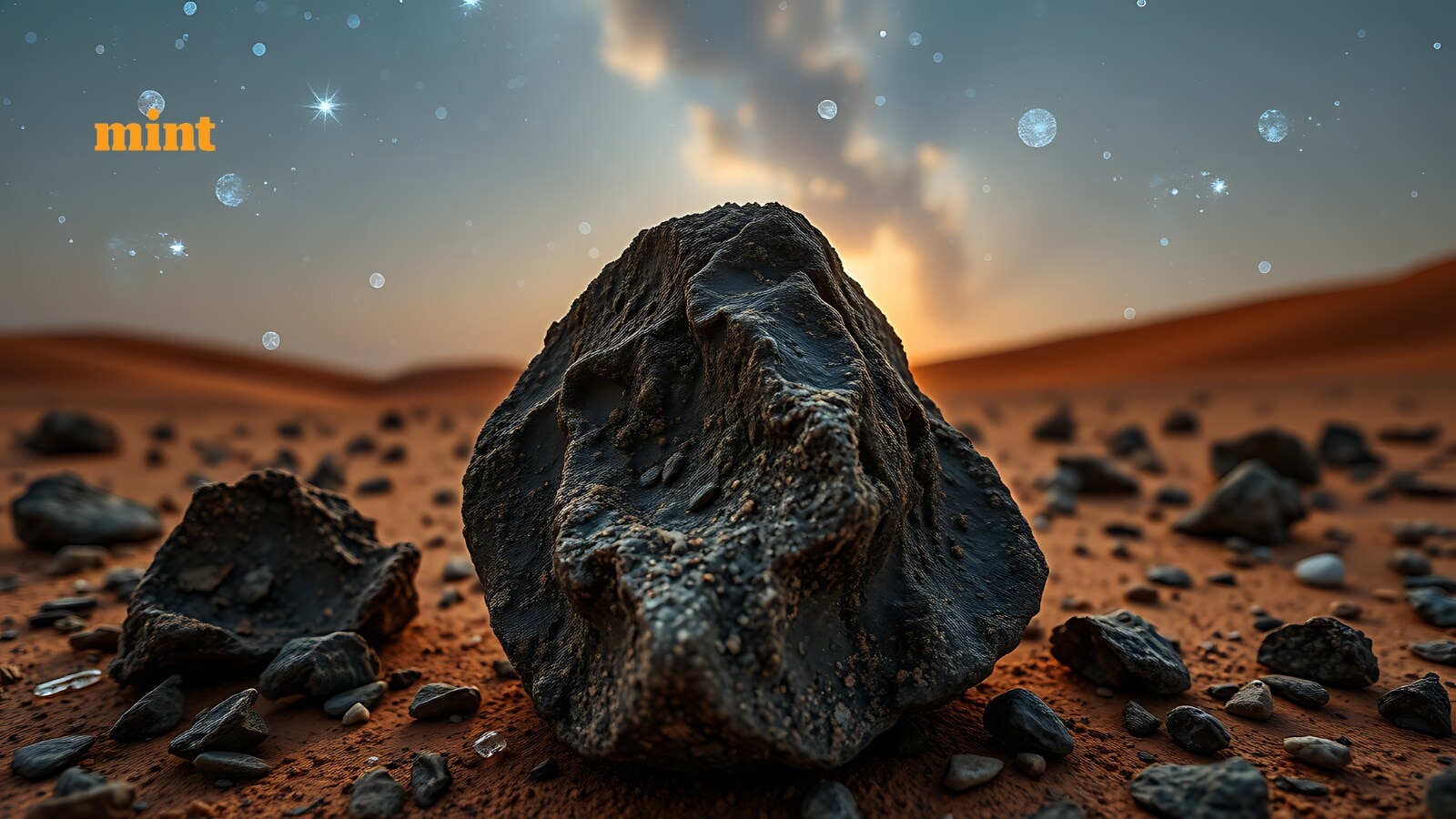Science
Scientists Discover Possible Mercury Meteorites in Sahara Desert

Researchers have made a groundbreaking discovery in the Sahara Desert, where two meteorites potentially originating from Mercury have been found. If confirmed, these meteorites would represent the first instances of material from Mercury, the closest planet to the Sun, ever identified on Earth.
Mercury’s proximity to the Sun makes it a challenging subject for study. Historically, only two spacecraft, Mariner 10 and MESSENGER, have successfully explored the planet, while a third mission, BepiColombo, is expected to arrive in 2026. In contrast, over 1,100 meteorites from Mars and the Moon have been documented on Earth, yet none have been confirmed to originate from Mercury.
Potential Origins of the Meteorites
Researchers suggest that Mercury may indeed be capable of ejecting rock fragments into space during asteroid impacts, despite its small size. The dynamics of this process are complicated by the planet’s need to overcome the gravitational pull of the Sun. According to Ben Rider-Stokes, a researcher involved in the study, “Based on the amount of lunar and Martian meteorites, we should have around 10 Mercury meteorites, according to dynamical modelling. However, Mercury is a lot closer to the Sun, so anything that’s ejected off Mercury also has to escape the Sun’s gravity to get to us. It is dynamically possible, just a lot harder.”
The two meteorites, designated as NWA 15915 and KG 022, could provide valuable insights into Mercury’s surface characteristics. However, their age raises questions; they appear to be around 500 million years older than Mercury’s known surface. Rider-Stokes believes this discrepancy might stem from inaccurate dating techniques rather than indicating a different origin.
Previous Findings and Current Implications
The search for meteorites from Mercury is not new. In 2012, a meteorite named NWA 7325, discovered in Morocco, was initially thought to be from Mercury. It generated excitement among scientists until further analysis revealed an excess of chromium, which did not align with Mercury’s chemical profile. Similarly, previous finds of aubrites in France were believed to originate from Mercury’s inner layer but were also dismissed due to their chemical inconsistencies.
The latest meteorites found in the Sahara may finally hold the key to understanding Mercury. Their mineral composition includes olivine and pyroxene, minerals that have been identified in data returned by NASA’s MESSENGER mission. Furthermore, the absence of iron in these meteorites aligns with established scientific models of Mercury’s surface.
Until samples can be brought back from Mercury or a direct mission to the planet takes place, confirming the origins of these meteorites remains a significant challenge. Nonetheless, the discovery of these potential Mercury meteorites in the Sahara opens a new avenue for understanding the solar system’s innermost planet.
-

 World5 months ago
World5 months agoSBI Announces QIP Floor Price at ₹811.05 Per Share
-

 Lifestyle5 months ago
Lifestyle5 months agoCept Unveils ₹3.1 Crore Urban Mobility Plan for Sustainable Growth
-

 Science4 months ago
Science4 months agoNew Blood Group Discovered in South Indian Woman at Rotary Centre
-

 World5 months ago
World5 months agoTorrential Rains Cause Flash Flooding in New York and New Jersey
-

 Top Stories5 months ago
Top Stories5 months agoKonkani Cultural Organisation to Host Pearl Jubilee in Abu Dhabi
-

 Sports4 months ago
Sports4 months agoBroad Advocates for Bowling Change Ahead of Final Test Against India
-

 Science5 months ago
Science5 months agoNothing Headphone 1 Review: A Bold Contender in Audio Design
-

 Top Stories5 months ago
Top Stories5 months agoAir India Crash Investigation Highlights Boeing Fuel Switch Concerns
-

 Business5 months ago
Business5 months agoIndian Stock Market Rebounds: Sensex and Nifty Rise After Four-Day Decline
-

 Sports4 months ago
Sports4 months agoCristian Totti Retires at 19: Pressure of Fame Takes Toll
-

 Politics5 months ago
Politics5 months agoAbandoned Doberman Finds New Home After Journey to Prague
-

 Top Stories5 months ago
Top Stories5 months agoPatna Bank Manager Abhishek Varun Found Dead in Well









